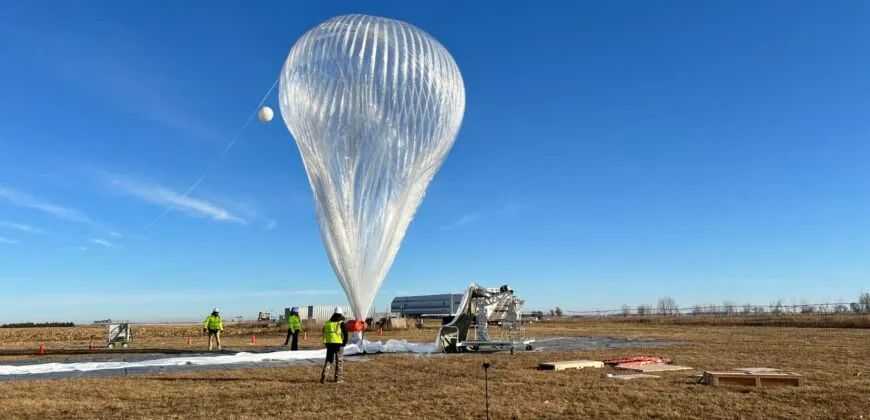Skip to content
Thunderhead Stratospheric Balloon
According to a report from the U.S. Defense News on December 12, Airbus U.S. Space & Defense and Aerostar have announced the completion of a series of joint flight tests to validate the application capabilities of stratospheric ISR systems.
This joint flight included an Aerostar Thunderhead stratospheric balloon system and a series of satellite communication (satcom) terminals, along with Airbus’s high-altitude solar drone Zephyr.
Zephyr S High-Altitude Solar Drone
Airbus Space & Defense showcased its “Zephyr” solar drone, which has a wingspan of 25 meters, a total weight of 75 kilograms, a payload capacity of 8 kilograms, and a cruising speed of 20 kilometers per hour. It is powered by solar energy during the day and by lithium-sulfur batteries at night, with a maximum design endurance of 120 days (the test record is 64 days, with a range exceeding 259,000 kilometers). The drone can carry various sensors for long-term tasks such as reconnaissance, surveillance, and communication relay, acting as a high-altitude “pseudo-satellite”.
Aerostar showcased its Thunderhead stratospheric balloon, which operates at altitudes of approximately 18 to 27 kilometers. It has advantages in endurance, maneuverability, flexibility, and launch costs, compensating for the limitations of traditional aircraft and satellites, further enhancing the military’s wide-area intelligence, surveillance, and reconnaissance capabilities.
Before the flight tests, a cross-functional engineering team from both companies modified the satellite communication terminals to reduce their weight and prepare them for the extreme environmental conditions associated with long-duration stratospheric operations.
“Over the past few months, the engineering teams from both companies have been working collaboratively, which will undoubtedly allow both companies to benefit from each other’s expertise in stratospheric operations and payload integration,” said Fabian Kluessendorf, Director of UAS Engineering at Airbus U.S. “The ability to relay high-fidelity ISR data in real-time from anywhere in the world, such as full-motion video, is a significant step forward for the U.S. Department of Defense and our allies towards mission readiness. Conducting these developments together also paves the way for future joint operations that leverage the complementary characteristics of these two stratospheric assets.
The flight tests began on Friday, November 8, 2024, from Sioux Falls, South Carolina, and concluded on December 6, 2024, testing a reinforced communication system suitable for supporting stratospheric ISR sensor applications. The combination of these systems enables near-real-time communication and ensures operationally relevant information for critical decision-making.
“High-altitude platforms, whether lighter-than-air or fixed-wing, provide unparalleled persistent sensing and communication, maintaining operations in target areas for weeks to months. No other systems can offer comparable durability, and the costs are just a fraction of traditional assets,” said Russ Van Der Werff, Vice President of Stratospheric Solutions at Aerostar. “We look forward to continuing our collaboration with Airbus and refining the latest technologies of HAP in defense applications.”
Aerostar has over 65 years of innovation and expertise in lighter-than-air vehicles, having logged 2 million hours of stratospheric flight, dedicated to connecting, protecting, and saving lives. Aerostar is headquartered in Sioux Falls, South Dakota, providing world-leading solutions in the aerospace and defense markets, focusing on stratospheric balloon systems and radar solutions. Learn more at www.aerostar.com.
About Airbus U.S. Space & Defense
As a long-term partner of the U.S. government, Airbus U.S. Space & Defense leverages world-class satellite, laser communication, rotorcraft, and fixed-wing solutions to assist its national security-focused customers in accomplishing their missions. As a leader in the fixed-wing HAPS domain, Zephyr has already achieved over 64 days of endurance at altitudes above 60,000 feet. Learn more at https://airbusus.com.



